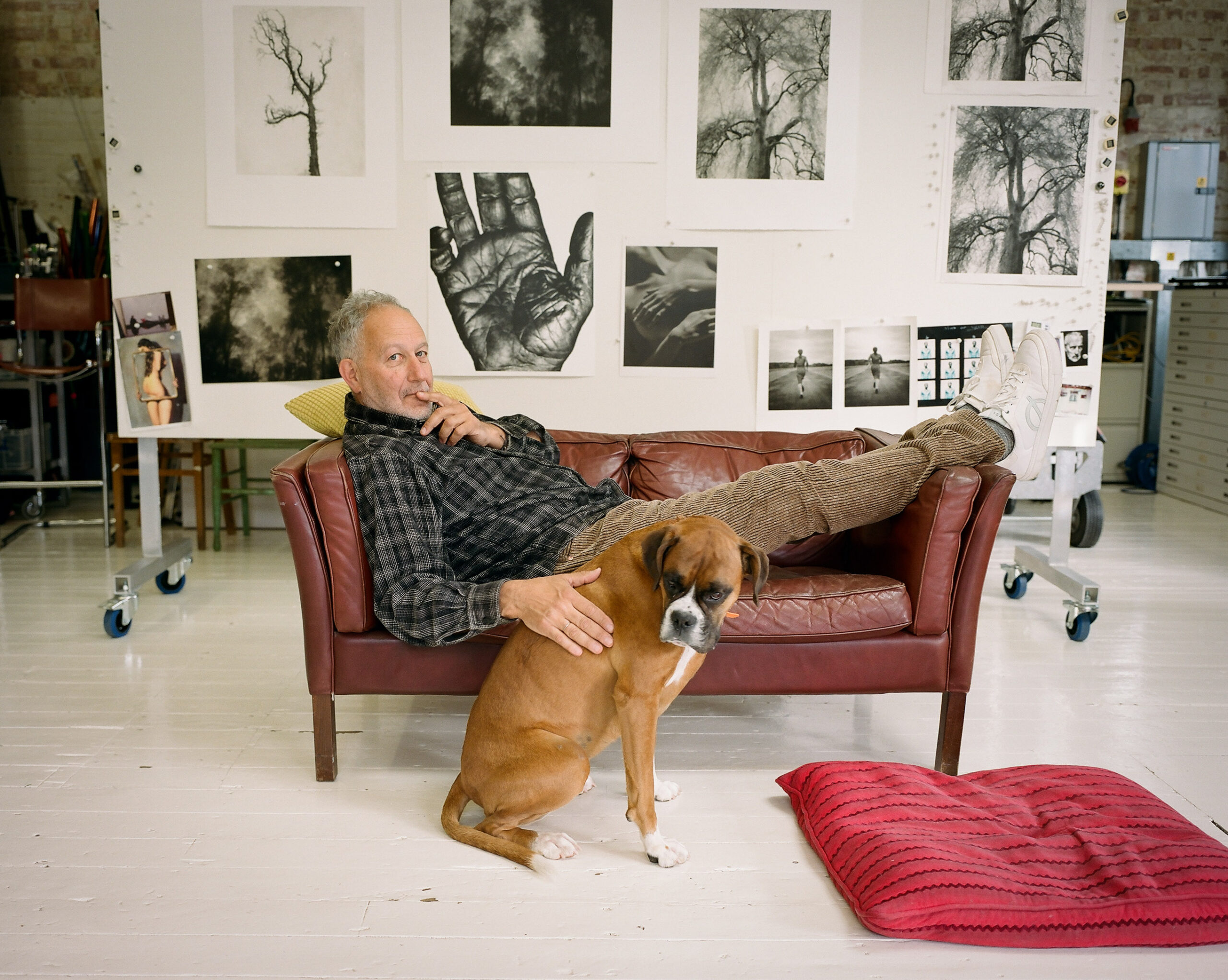
“I needed to almost begin again, feeling the same feeling, which is why I would come at night,” he says. “I would try to make these works feel like I feel. And that needed layering of colour, or flattening of parts, taking away information where it’s not needed, and really getting into printmaking.” For Kander, the process was a kind of meditation, “my favourite meditation”.
When the work was exhibited at Flowers Gallery in London, Kander included a moving-image work, scored by Max Richter, which showed him sinking and rising beneath and above the diaphanous surface of the Thames, all slowed to half-speed. The film helped guide the viewer’s experience of the photographs. “I was talking about the river in old age, softening, darkening, and beginning to die, beginning to be absorbed, and if you would like to think Jung, or Buddhism, you might think evaporate and start again,” Kander says. “I wanted the exhibition to become clearer, what it was that I was authoring.”
The exhibition asked for more from the viewer than simply contemplating exquisite prints for their aesthetic appeal. “You were here to invite yourself to feel rhythm, to feel tide, to feel this natural phenomenon that is around us, which for me was – is – what this work is about. Being born and dying, another rhythm. And the beauty in that, and the softness of that.” In the film, Kander’s hands are gently placed above his heart, his eyes closed, face relaxed into a mild and beatific smile. Pulled below the surface, he turns his head, opens his eyes, and looks towards us through the water. Some people left the installation in tears.
This clarity of intent is an absolute priority for Kander. “I’m only really interested in work that shows clear authorship,” he says, work that “really shows the person behind the camera”. “I remember clocking that when I was a kid, looking at Edward Weston’s work,” he recalls. “He could show a nude that looked like his portrait, that looked like his shells, that looked like his toilet bowl, his pepper. I remember thinking, ‘Five different subject matters, and they all are his’. That was authorship.” Kander pauses. “I’m not from the camera club who wants to print exactly what the film has – that’s not what it’s about for me. I’m much more about how you feel about the shape and colour.”



